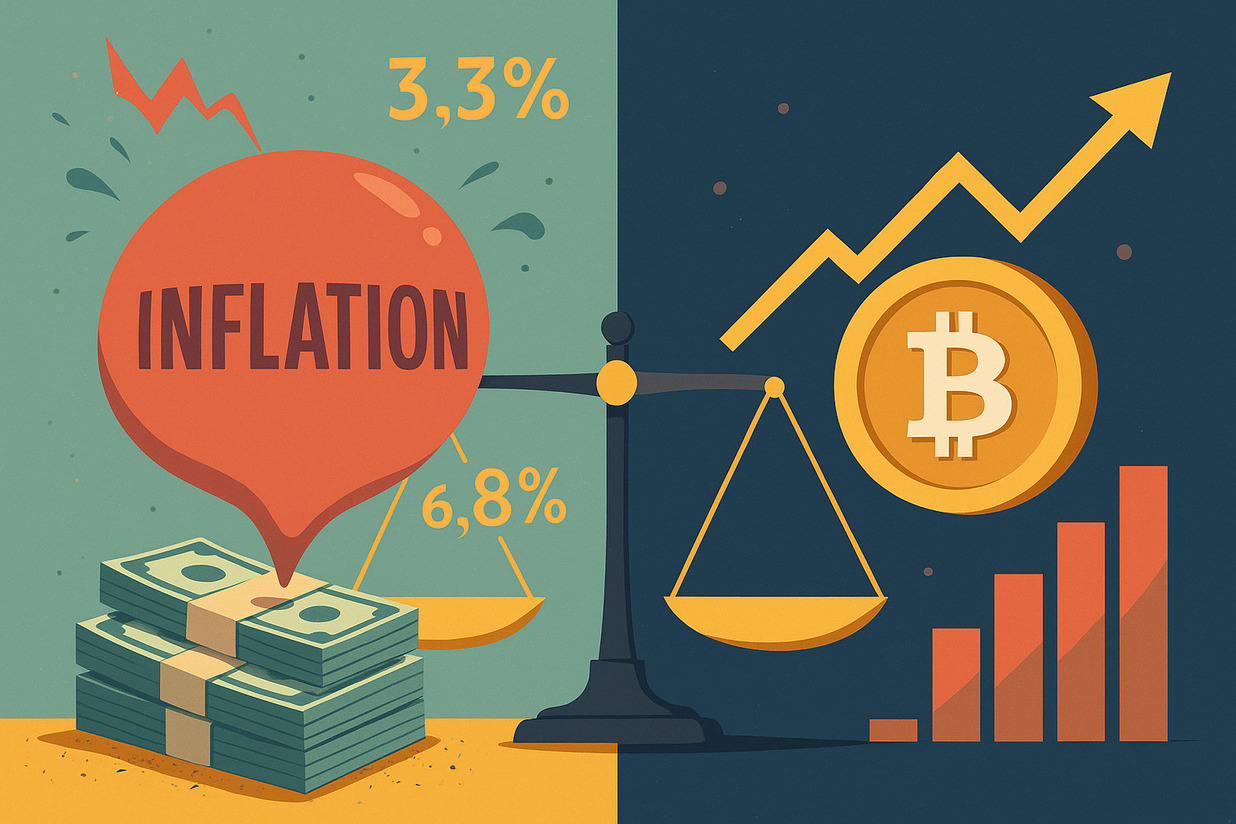Understanding the Value of Bitcoin Amid Rising Prices
As prices of goods continue to climb, many people are looking for ways to protect their money. It’s not just about saving—it’s about where to safely store the value of your hard-earned income. This leads to questions about Bitcoin—a digital asset often compared to gold when it comes to protecting against fiat currency depreciation.
Fiat currencies like the dollar, euro, or ringgit are backed by governments and central banks. However, they’re also vulnerable to inflation. When money printing increases or the economy weakens, the real value of fiat falls. In this environment, many turn to Bitcoin as an alternative.
The idea of Bitcoin as a “hedge” isn’t just speculation. It’s gaining traction among investors, economists, and everyday people seeking a more stable store of wealth.
Limited Supply as Fundamental Protection
One key reason Bitcoin is viewed as protection against inflation is its limited supply. Only 21 million Bitcoins will ever exist. Unlike fiat money, which governments can print more of, Bitcoin has a hard cap that can’t be changed.
With limited supply and rising demand, prices tend to go up—just like gold or other natural resources. Because of this, many regard Bitcoin as the digital equivalent of gold.
Historically, during economic crises, Bitcoin’s price often spikes. Although there are short-term dips, the principle that its finite supply shields against fiat devaluation remains intact.
Central Banks and Their Impact on Fiat Currency
When a central bank decides to print more money to stimulate the economy, it affects the currency’s purchasing power. Money supply grows without a matching increase in goods and services. That mismatch is what drives inflation.
In countries that have experienced severe inflation—such as Argentina or Venezuela—their fiat currencies have almost collapsed in value. In these situations, people migrate to alternative stores of value like the U.S. dollar, gold, or now—Bitcoin.
Bitcoin has no central authority controlling its issuance. No central bank can increase its supply. Despite being digital, its very design fights this kind of problem.
Bitcoin as a Store of Value
Many experts consider Bitcoin a “store of value” — an asset that can maintain worth over the long term. During periods of rising prices or fiat devaluation, a reliable store of value provides protection.
Gold has long been seen this way. In the tech age, Bitcoin has become the alternative for digital-savvy investors. It’s easy to transfer, secure when properly protected, and immune to government decisions.
For example, during the pandemic, when many countries printed large sums of money, interest in Bitcoin surged. People viewed it as a wealth shelter amid economic uncertainty.
Bitcoin’s Volatility and Its Short-Term Effects
It’s true that Bitcoin’s price can be volatile. It sometimes surges dramatically and other times plunges significantly. This volatility fuels doubt about its ability to hedge inflation in the short term.
Yet many Bitcoin advocates believe that volatility diminishes over time. As user adoption grows and global acceptance widens, its price stability improves.
Despite price swings, the fact that its supply is fixed remains the core reason it’s considered an alternative to fiat currencies, which lack supply controls.
Institutional Adoption of Bitcoin
Another factor strengthening Bitcoin’s position as a hedge is institutional adoption. From major banks to public companies, many have begun investing in or holding Bitcoin as part of their portfolios.
For instance, several U.S. firms purchased hundreds of millions of dollars’ worth of Bitcoin to protect their treasury against inflation. It’s no longer experimental—it’s a mainstream financial strategy.
Institutional entry also boosts public confidence. When well-known companies back Bitcoin, more people feel assured that it’s a legitimate asset.
Bitcoin’s Track Record During Inflationary Periods
In years of high inflation around the world, interest in Bitcoin has surged. In Turkey, for example, as the lira weakened, Bitcoin search and trading volumes rose. Likewise in Nigeria, crypto usage expanded as a shield against fiat devaluation.
Although not every country follows this pattern, the correlation between high inflation and alternative-asset demand is clear. Bitcoin becomes prominent when local currency or the central system loses trust.
This trend shows that while not perfect, Bitcoin plays a refuge role during economic uncertainty—and in some places even serves as a primary store of value.
How Bitcoin Differs from Other Investment Assets
Bitcoin’s character differs from stocks, bonds, or real estate. It pays no dividends or rental yield, yet functions as digital property. You can use it anywhere, anytime, without traditional bank intermediaries.
This type of asset suits those seeking alternatives to traditional investments. It doesn’t mean replacing all savings with Bitcoin, but rather adding a new dimension to wealth protection strategies.
Bitcoin’s flexibility also appeals to those who dislike complex banking systems. In some cases, it offers faster and cheaper international transfers.
Bitcoin as Part of a Diversified Portfolio
Diversification is crucial for wealth preservation. It means not concentrating all your assets in one place. Here, Bitcoin offers an extra layer of protection against fiat volatility.
When fiat loses value, other assets in your portfolio can offset those losses. Bitcoin is one asset that can rebound in such times. Instead of relying solely on stocks or savings accounts, you can include digital assets.
Some investors allocate a small percentage of their total holdings to Bitcoin. Even a modest allocation can yield significant gains if Bitcoin’s price rises, enhancing overall portfolio performance.
The Role of Education in Using Bitcoin Properly
Simply purchasing Bitcoin and hoping its value will climb is insufficient for maximizing this digital asset’s potential. To use Bitcoin wisely, one must understand best practices for secure custody—whether that means employing hardware wallets, setting up multi-signature accounts, or using reputable custodial services. Equally important is learning how to time your buys and sells based on market indicators, news events, and on-chain data. Above all, safeguarding your private keys through encrypted backups and offline storage is non-negotiable, as losing access can mean permanent loss of funds.
A wealth of educational materials is available online to guide users from the fundamentals to advanced strategies. Beginners can start with introductory tutorials on blockchain technology, wallet setup, and transaction mechanics. As you gain confidence, you can delve into technical analysis, learning to read price charts, monitor network metrics like hash rate or transaction volume, and recognize market sentiment through order book insights. Participating in community forums, joining webinars hosted by industry experts, and following credible crypto publications will deepen your practical understanding. Engaging directly with seasoned Bitcoin users accelerates learning and helps you avoid common pitfalls.
Crafting an effective Bitcoin strategy begins with a solid grasp of what Bitcoin truly is—a decentralized protocol for transferring value without intermediaries—and how it behaves in different market cycles. Recognizing Bitcoin’s role as part of a diversified financial plan allows you to allocate a prudent percentage of your portfolio, mitigating overall risk. Continuous education ensures you stay informed about evolving technologies, regulatory developments, and emerging security threats. By prioritizing learning and adaptability, you’ll be better equipped to make informed decisions, capitalize on opportunities, and maintain confidence during periods of market volatility.
















No Responses